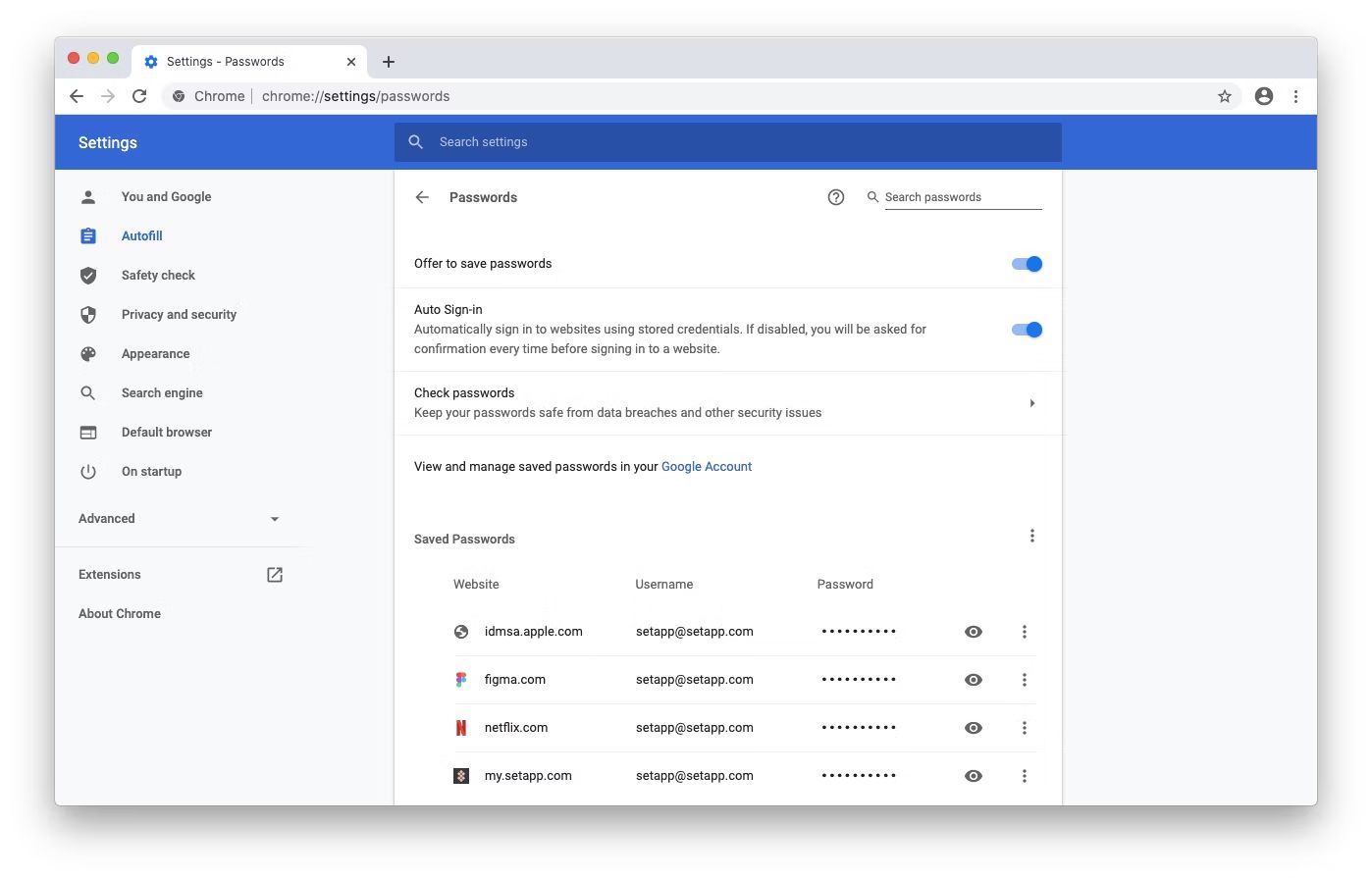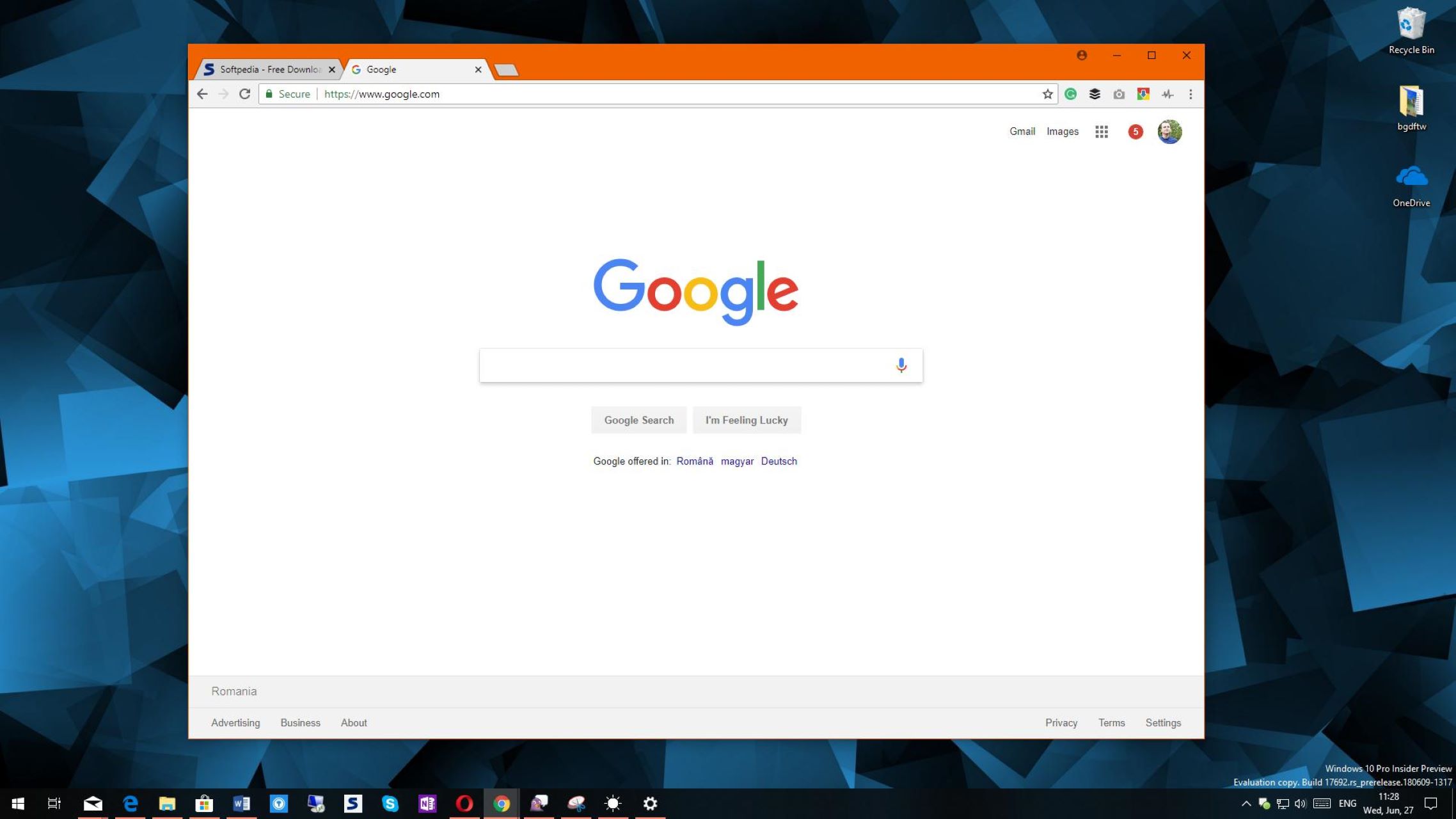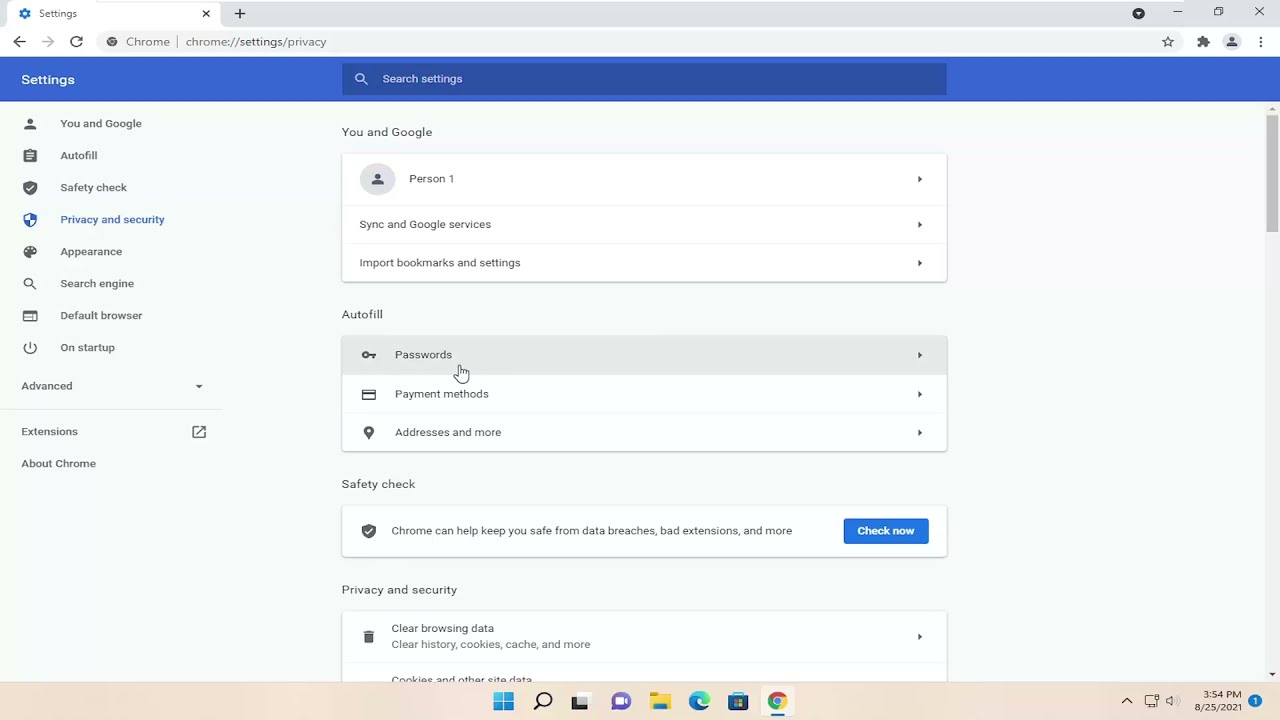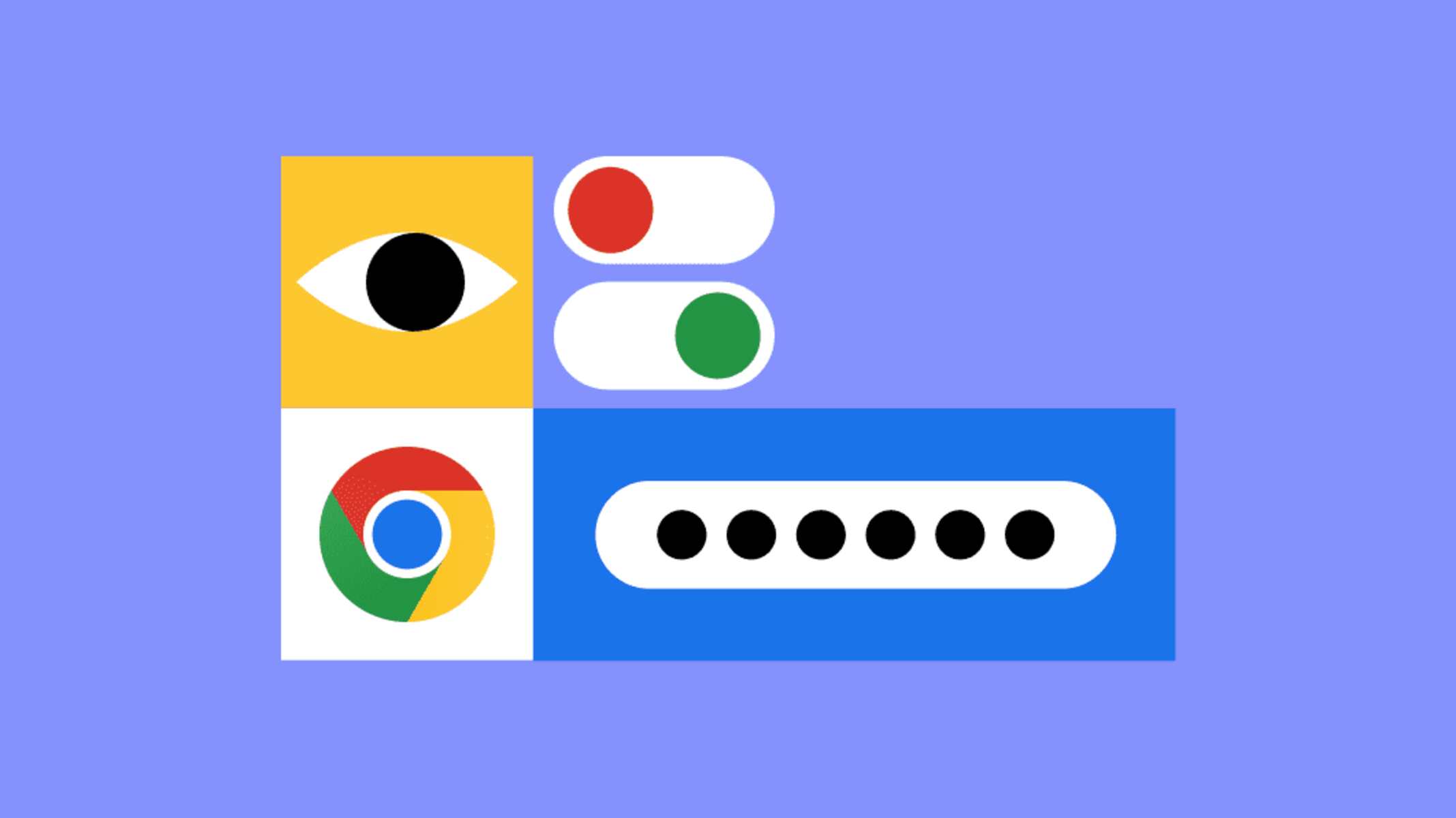Introduction
In today's digital age, web browsers have become an integral part of our daily lives, serving as gateways to the vast realm of the internet. Google Chrome, one of the most popular browsers, offers a seamless and user-friendly experience, allowing users to save their usernames and passwords for quick and convenient access to their favorite websites. While this feature undoubtedly enhances efficiency, there are instances when users may wish to clear their saved usernames for privacy or security reasons.
Whether you're using a shared computer, seeking to maintain your online privacy, or simply looking to declutter your saved credentials, knowing how to clear saved usernames in Chrome can be invaluable. Fortunately, Chrome provides several methods to accomplish this, each offering its own advantages and ease of use.
In this comprehensive guide, we will explore three effective methods to clear saved usernames in Chrome. From utilizing Chrome's settings to leveraging the browser's incognito mode and password manager, you'll discover the step-by-step processes to achieve your desired outcome. By following these methods, you can take control of your online identity and ensure that your browsing experience aligns with your preferences and security needs.
So, whether you're a tech-savvy individual or someone who simply wants to navigate the digital landscape with confidence and peace of mind, this guide will equip you with the knowledge and tools to manage your saved usernames in Chrome effectively. Let's delve into the methods and empower ourselves to navigate the digital realm with ease and security.
Method 1: Clearing Saved Usernames through Chrome Settings
Clearing saved usernames through Chrome settings is a straightforward and effective method to manage your browsing data. By following these simple steps, you can easily remove saved usernames and maintain your privacy and security while using the Chrome browser.
-
Accessing Chrome Settings:
- To begin, open the Chrome browser on your computer or mobile device.
- Click on the three-dot menu icon located in the top-right corner of the browser window to open the Chrome menu.
- From the menu, select "Settings" to access the browser's settings and customization options.
-
Navigating to Passwords:
- Within the Settings menu, scroll down and click on "Passwords" under the "Autofill" section. This will direct you to the Passwords settings where you can manage your saved usernames and passwords.
-
Viewing Saved Usernames:
- Once in the Passwords settings, you will see a list of websites for which Chrome has saved your usernames and passwords. You can scroll through the list to locate the specific usernames you wish to clear.
-
Removing Saved Usernames:
- To clear a saved username, simply click on the three-dot menu icon next to the username you want to remove.
- From the dropdown menu, select "Remove" to delete the saved username from Chrome's storage.
-
Confirming the Action:
- After selecting "Remove," Chrome will prompt you to confirm the deletion. Click on "Remove" again to confirm the action and permanently clear the saved username from your browser.
-
Repeat as Needed:
- You can repeat the process for any additional usernames you wish to remove, ensuring that your saved credentials align with your current preferences and security considerations.
By following these steps, you can effectively clear saved usernames through Chrome settings, providing you with greater control over your browsing data and privacy. This method offers a user-friendly approach to managing your saved credentials, empowering you to tailor your browsing experience to your specific needs and preferences.
Whether you're using Chrome on a personal device or a shared computer, understanding how to navigate the browser's settings to clear saved usernames can contribute to a more secure and personalized browsing experience. With this method at your disposal, you can confidently manage your saved usernames in Chrome, aligning your browsing habits with your privacy and security goals.
Method 2: Using Chrome's Incognito Mode
Utilizing Chrome's Incognito Mode presents a convenient and efficient approach to browsing the web without leaving behind a trail of saved usernames and passwords. This feature is particularly useful when you want to access websites without the browser storing your login credentials. By following the steps outlined below, you can leverage Chrome's Incognito Mode to navigate the web with enhanced privacy and anonymity.
-
Opening an Incognito Window:
- To initiate Incognito Mode, open the Chrome browser on your computer or mobile device.
- Click on the three-dot menu icon in the top-right corner of the browser window to reveal the Chrome menu.
- From the menu, select "New Incognito Window." This action will launch a new window with the Incognito Mode interface, indicating that your browsing activity will not be saved.
-
Navigating Without Saved Usernames:
- Once in the Incognito window, you can browse the web as you normally would, visiting websites and accessing online services.
- Since Chrome does not save usernames or passwords entered during an Incognito session, you can navigate freely without the concern of your credentials being stored.
-
Closing the Incognito Window:
- When you have completed your Incognito browsing session, simply close the Incognito window.
- Upon closure, Chrome will automatically delete any browsing history, cookies, and site data associated with the Incognito session, ensuring that no saved usernames or passwords are retained.
By utilizing Chrome's Incognito Mode, you can effectively bypass the storage of saved usernames and passwords, offering a seamless and privacy-focused browsing experience. Whether you're accessing sensitive accounts or simply prefer not to have your browsing activity saved, Incognito Mode serves as a valuable tool for managing your online privacy.
This method is particularly beneficial when using public or shared devices, as it allows you to maintain your privacy and security while accessing websites without leaving behind any saved credentials. By integrating Incognito Mode into your browsing habits, you can navigate the web with confidence, knowing that your usernames and passwords remain private and transient.
Incorporating Chrome's Incognito Mode into your browsing routine empowers you to take control of your online identity, ensuring that your saved usernames are managed in alignment with your privacy preferences. Whether you're exploring the web for personal interests or professional endeavors, leveraging Incognito Mode offers a versatile and user-friendly solution for browsing without the burden of saved credentials.
Method 3: Clearing Saved Usernames through Chrome's Password Manager
Clearing saved usernames through Chrome's Password Manager provides a comprehensive and centralized approach to managing your login credentials. By leveraging this built-in feature, users can efficiently review and remove saved usernames and passwords across various websites, ensuring that their browsing data aligns with their current preferences and security considerations.
To begin the process of clearing saved usernames through Chrome's Password Manager, follow these simple steps:
-
Accessing Chrome's Password Manager:
- Open the Chrome browser on your computer or mobile device.
- Click on the three-dot menu icon in the top-right corner of the browser window to access the Chrome menu.
- From the menu, select "Settings" to navigate to the browser's settings and customization options.
-
Navigating to Passwords:
- Within the Settings menu, scroll down and click on "Passwords" under the "Autofill" section. This action will direct you to Chrome's Password Manager, where all your saved usernames and passwords are stored.
-
Reviewing Saved Usernames:
- Once in the Password Manager, you will see a comprehensive list of websites for which Chrome has saved your usernames and passwords. This centralized view allows you to review and manage your login credentials efficiently.
-
Removing Saved Usernames:
- To clear a saved username, simply click on the three-dot menu icon next to the username you wish to remove.
- From the dropdown menu, select "Remove" to initiate the deletion of the saved username from Chrome's Password Manager.
-
Confirming the Action:
- After selecting "Remove," Chrome will prompt you to confirm the deletion. Click on "Remove" again to finalize the action and permanently clear the saved username from your browser's Password Manager.
By following these steps, users can effectively manage their saved usernames and passwords through Chrome's Password Manager, streamlining the process of maintaining their browsing data and privacy. This method offers a centralized and user-friendly approach to clearing saved credentials, empowering users to tailor their online identity to their specific needs and preferences.
Whether you're a casual internet user or a professional navigating the digital landscape, understanding how to utilize Chrome's Password Manager to clear saved usernames contributes to a more secure and personalized browsing experience. With this method, users can confidently manage their saved credentials, ensuring that their online privacy and security remain paramount.
Incorporating Chrome's Password Manager into your routine empowers you to take control of your online identity, ensuring that your saved usernames are managed in alignment with your privacy preferences. Whether you're accessing personal accounts or professional resources, leveraging Chrome's Password Manager offers a versatile and user-friendly solution for effectively managing your saved usernames and passwords.

























